Accipiters and Buteos are two distinct groups of raptors, or birds of prey, known for their remarkable hunting abilities and adaptations.
While they belong to the same order of birds, Accipitriformes, they exhibit significant differences in their physical characteristics, hunting strategies, and ecological roles.
Without having proper knowledge of those differences, it is often very difficult to identify them on the spot.
In this article, we will explore the key distinctions between Accipiters and Buteos, shedding light on their unique features and behaviors that make them fascinating members of the avian world.
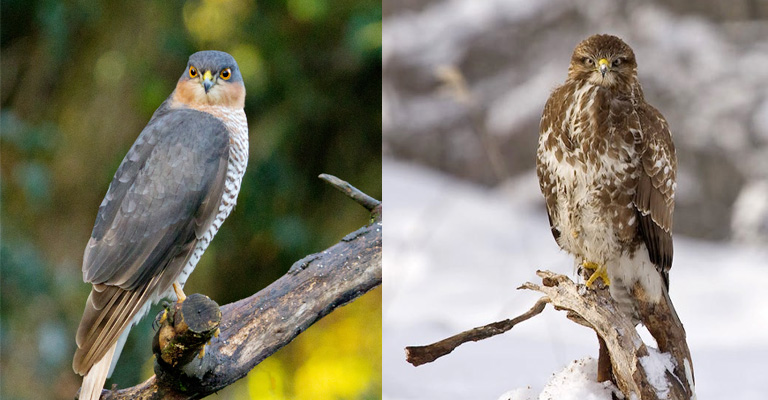
Physical Characteristics
Though, it is difficult to figure out, there are clear differences between an accipiter and a buteo in their physical appearances. Here are the points of difference you should know to identify them.
Accipiters
Accipiters are generally smaller in size compared to buteos. They have a compact and streamlined body shape, which aids in swift and agile flight. Their slender bodies enable them to maneuver through dense vegetation while hunting.
Wing Structure and Length
Accipiters possess shorter and rounder wings compared to buteos. These wings are well-suited for quick bursts of flight, allowing them to navigate through forests and chase their prey with precision.
The rounded wings provide excellent maneuverability in tight spaces.
Tail Length and Shape
Accipiters typically have longer tails relative to their body size. The tails are squared or slightly rounded at the tip. The length and shape of the tail assist in balancing and changing directions swiftly during flight, enhancing their agility and hunting abilities in wooded environments.
Buteos
Buteos are larger birds of prey compared to accipiters. They have a robust and sturdy body shape, which aids in soaring flight and hunting strategies adapted for open spaces.
Their size allows them to take advantage of thermals and currents to conserve energy during flight.
Wing Structure and Length
Buteos possess long and broad wings that are well-adapted for soaring. The broad wings provide ample lift, allowing them to soar effortlessly and cover large distances while searching for prey.
This wing structure enables buteos to maintain steady flight even in windy conditions.
Tail Length and Shape
Buteos typically have relatively short tails compared to accipiters. The tails are broad and square at the tip, providing stability during soaring flight.
The shorter tail length is an adaptation for their hunting style, which often involves perching and scanning open areas for ground-dwelling prey.
Accipiters and buteos can be distinguished by their size, body shape, wing structure, wing length, tail length, and tail shape. Accipiters have smaller bodies, rounder wings, and longer tails, while buteos have larger bodies, broad wings, and shorter tails.
Flight Patterns: Accipiters Vs Buteos
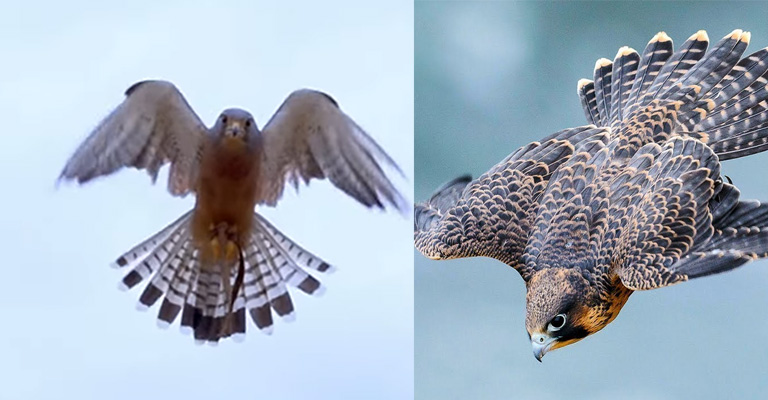
These two birds don’t really fly in the same way. Here are some points that have differences regarding their flying style.
Accipiters
Flight Style and Agility
Accipiters are known for their agile and maneuverable flight. They exhibit quick and precise movements while flying, allowing them to navigate through dense vegetation and tight spaces in forests.
Their flight style is characterized by sudden changes in direction, rapid accelerations, and decelerations.
Short, Rapid Flaps and Gliding
Accipiters utilize short, powerful wing flaps during flight. These rapid flaps provide them with the necessary lift and thrust to quickly change their position or chase prey.
Accipiters are also skilled gliders, efficiently using air currents and thermals to cover distances while conserving energy.
Buteos
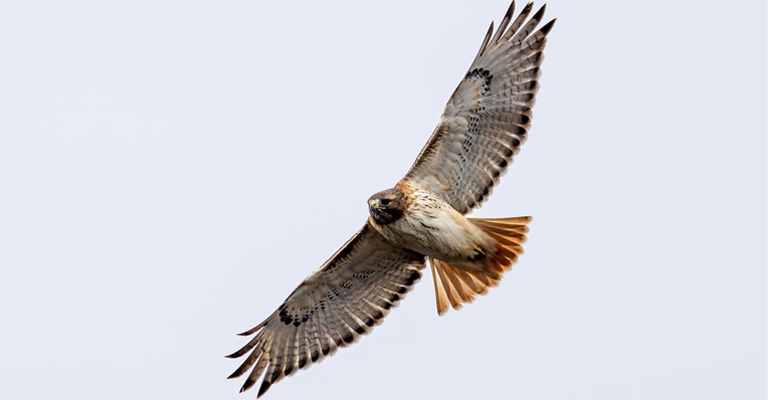
Flight Style and Soaring Abilities
Buteos are renowned for their soaring abilities. They excel at soaring flight, utilizing updrafts, thermals, and wind currents to stay aloft for extended periods with minimal effort.
Their flight style involves soaring in circular patterns, effortlessly riding the air currents in open spaces.
Broad Wings and Slow, Laborious Wing Beats
Buteos have broad wings that provide excellent lift and stability during soaring flights. These wings enable them to maintain steady flight even in windy conditions.
Unlike accipiters, buteos have slower and more laborious wing beats, using their wings primarily for maintaining altitude and adjusting their position while soaring.
Habitat Preferences: Accipiters Vs. Buteos
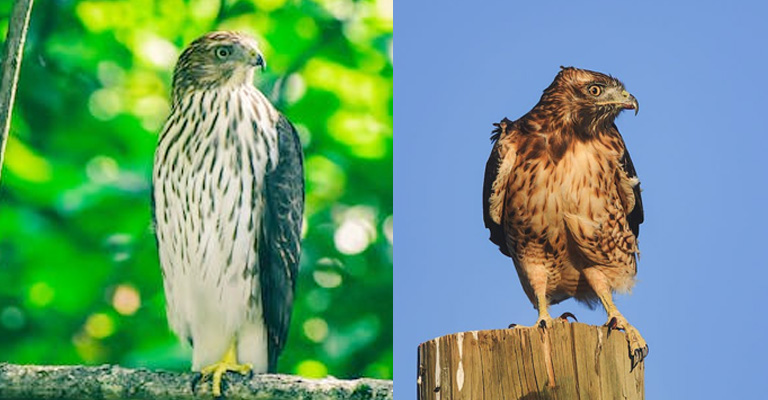
Accipiters and Buteos have a lot of differences in their habitat preference. Here are the facts that make them different.
Accipiters
Forest-Dwelling Nature
Accipiters are primarily associated with forested habitats. They are adapted to thrive in densely vegetated areas, such as woodlands and mixed forests.
These habitats provide accipiters with ample cover and an abundance of prey species, including birds and small mammals.
Adaptations for Maneuvering Through Wooded Areas
Accipiters have several adaptations that facilitate their maneuverability in forested environments. Their compact body shape, shorter wings, and long tails aid in navigating through dense vegetation and maneuvering around trees.
This agility enables them to swiftly pursue prey through complex and intricate woodland habitats.
Buteos
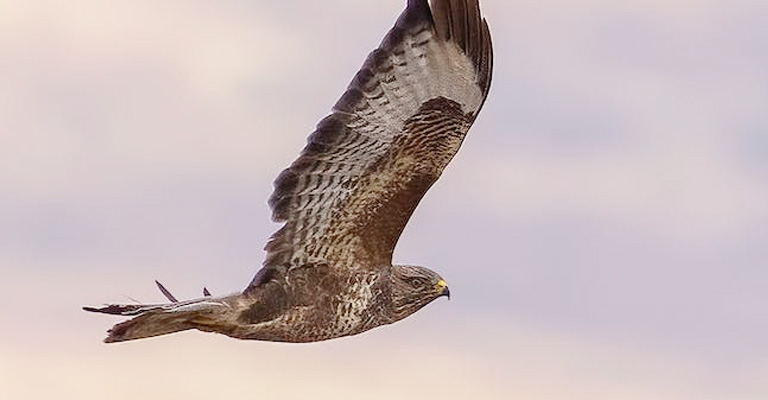
Open-Space Preference
Buteos, in contrast to accipiters, have a preference for open spaces. They are often found in habitats such as grasslands, prairies, deserts, and agricultural areas.
These habitats provide buteos with expansive visibility, allowing them to spot prey from a distance while soaring overhead.
Adaptations for Soaring and Hunting in Open Habitats
Buteos have evolved adaptations that are advantageous for soaring flight and hunting in open habitats. Their broad wings, combined with a robust body, enable them to take advantage of thermals and updrafts for efficient soaring.
The ability to soar effortlessly allows buteos to cover large areas while searching for ground-dwelling prey, such as rodents and reptiles.
Feeding Habits and Prey: Accipiters Vs. Buteos
These two living beings also have differences in their hunting style and strategies. You can learn about them from the below information.
Accipiter
Hunting Strategies
Accipiters employ various hunting strategies that capitalize on their agility and speed. One of their primary tactics is called “contour-hunting,” where they fly low and swiftly through forested areas, surprising their prey and taking advantage of cover.
They are adept at maneuvering through dense vegetation to flush out and pursue their target. Accipiters are also known for engaging in surprise attacks from perches or while in flight.
Preferred Prey Types
Accipiters primarily prey on small to medium-sized birds. They are adept at capturing agile and maneuverable birds in flight, utilizing their quick bursts of speed and agile flight patterns.
Some common prey species for accipiters include songbirds, doves, jays, and woodpeckers. They are skilled at ambushing their prey, often relying on surprise and stealth to catch their targets.
Buteos
Hunting Strategies
Buteos employ a hunting strategy known as “aerial hunting” or “kiting.” They often perch or soar at great heights, scanning the open landscape for potential prey.
Once a suitable target is spotted, they use their exceptional eyesight to track and descend upon their prey with controlled glides or short bursts of flight. Buteos are also known to engage in hovering and drop-down strikes.
Preferred Prey Types
Buteos have a varied diet that includes a range of small mammals and reptiles. Their preferred prey includes rodents such as mice, voles, and rabbits, as well as snakes, lizards, and occasionally small ground-dwelling birds.
Buteos rely on their keen vision and soaring abilities to spot prey from a distance, enabling them to hunt effectively in open habitats.
Important Facts of Accipiters and Buteos
There are some surprising yet essential facts about these two living beings that you should know for sure. As usual, I’ve described them separately.
Accipiters
Common Species and Their Characteristics
- Sharp-shinned Hawk (Accipiter striatus): This small-sized accipiter has a compact body, short rounded wings, and a long tail. It preys primarily on small birds and exhibits quick, agile flight.
Sharp-shinned Hawks are known for their sharp, hooked beak and short, powerful legs for capturing and handling prey. - Cooper’s Hawk (Accipiter cooperii): Similar in appearance to the Sharp-shinned Hawk, the Cooper’s Hawk is slightly larger. It has a rounded tail and medium-length wings.
Cooper’s Hawks are adept at maneuvering through dense vegetation and are known for their impressive hunting skills, often ambushing birds near feeders or in urban areas.
Notable Behaviors or Adaptations
Accipiters, including Sharp-shinned Hawks and Cooper’s Hawks, exhibit remarkable agility and maneuverability in flight. Their short wings and long tails aid in navigating through forested habitats and chasing down agile prey.
They have excellent vision and rely on surprise attacks, using their speed and quick acceleration to catch their targets. Accipiters also possess sharp talons and a strong grip, enabling them to securely grasp and capture their prey.
Buteos
Common Species and Their Characteristics
- Red-tailed Hawk (Buteo jamaicensis): The Red-tailed Hawk is one of the most widespread and recognizable buteos. It has a large body, broad wings, and a broad, rounded tail.
These hawks often have a reddish-brown tail, hence their name. Red-tailed Hawks soar effortlessly and are commonly found in open habitats, such as grasslands and agricultural areas. - Rough-legged Hawk (Buteo lagopus): Rough-legged Hawks are medium-sized buteos known for their distinctive feathered legs. They have long wings and a white underside with dark markings.
These hawks breed in Arctic regions and migrate to lower latitudes during winter. They can often be seen perched on poles or hovering while searching for prey in open areas.
Notable Behaviors or Adaptations
Buteos, such as Red-tailed Hawks and Rough-legged Hawks, are skilled soarers. Their broad wings allow them to catch thermals and soar effortlessly for extended periods, conserving energy while scanning for prey from high vantage points.
Buteos have keen eyesight, enabling them to spot small movements on the ground. They exhibit patience in their hunting strategies, often perching or soaring for long periods before making a calculated strike.
20 Differences A a Glance: Accipiters Vs. Buteos
| Accipiters | Buteos |
| Smaller in size | Larger in size |
| Compact body shape | Robust body shape |
| Short, rounded wings | Broad wings |
| Long tail | Rounded or squared tail |
| Forest-dwelling nature | Open-space preference |
| Maneuver through wooded areas | Soaring abilities in open habitats |
| Swift and agile flight | Slow and laborious flight |
| Quick bursts of speed | Efficient soaring on thermals and updrafts |
| Primarily hunt small to medium-sized birds | Prey on small mammals, reptiles, and birds |
| Surprise attacks and ambushing prey | Aerial hunting and hovering for prey |
| Adapted for navigating dense vegetation | Adapted for spotting prey from a distance |
| Sharp, hooked beak | Strong talons for capturing and gripping prey |
| Short, powerful legs | Longer legs for perching and grasping prey |
| Excellent vision for tracking prey | Keen eyesight for spotting movement on the ground |
| Found in diverse forested habitats | Thrive in grasslands, prairies, and open areas |
| Examples: Sharp-shinned Hawk, Cooper’s Hawk | Examples: Red-tailed Hawk, Rough-legged Hawk |
FAQs
Yes, both accipiters and buteos have a global distribution, although the specific species and their populations may vary across different regions.
Yes, many accipiters and buteos undertake seasonal migrations. Some species breed in northern regions and migrate southward during winter in search of more favorable feeding grounds.
Yes, accipiters and buteos are protected under various conservation laws and regulations in many countries due to their ecological importance and population declines in some regions.
Yes, both accipiters and buteos build nests for breeding purposes. They construct their nests using sticks and other materials, often in tall trees or on cliff ledges.
Accipiters and buteos can be solitary birds, but they may also be observed in pairs or family groups during breeding seasons or when sharing resources.
Wrapping Up
Accipiters and Buteos represent two contrasting groups within the raptor family, each with its own set of distinctive traits and hunting strategies.
Accipiters are characterized by their agility, slender bodies, short wings, and long tails, which enable them to maneuver swiftly through dense forests and pursue agile prey.
On the other hand, Buteos possess broad wings, robust bodies, and broad tails, allowing them to soar effortlessly in open habitats and employ a sit-and-wait hunting style.
While Accipiters excel in capturing small birds and mammals in tight spaces, Buteos are adept at hunting larger prey such as rabbits, snakes, and even small deer.
They have differences in hunting preferences and physical adaptations reflect the specific ecological niches as well.
You’ve understood the factors of differences well. Still if you have any confusion, please let us know about it. Thank you for your time.